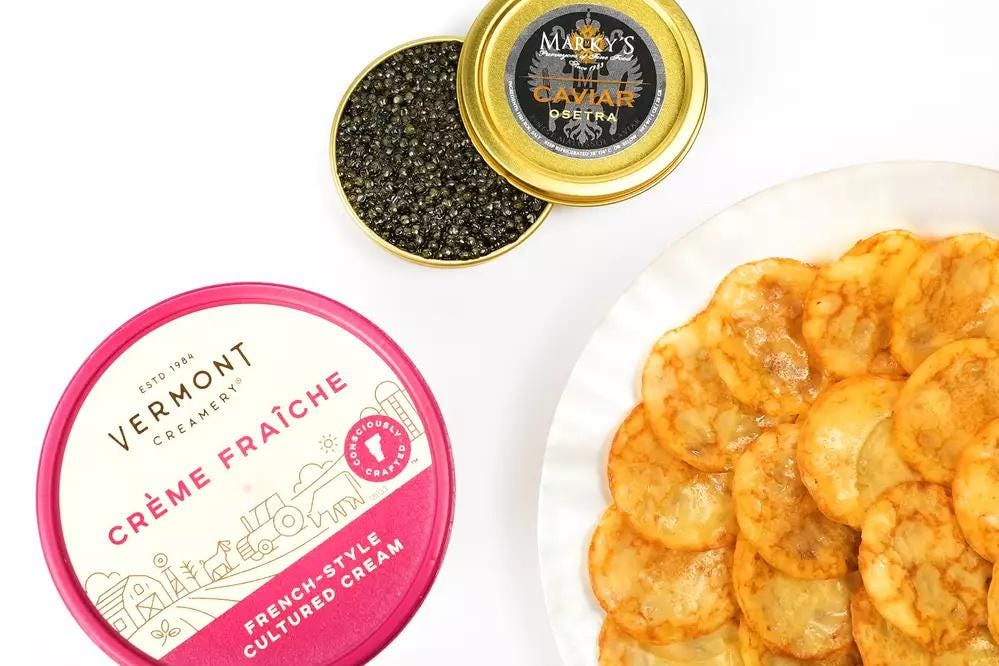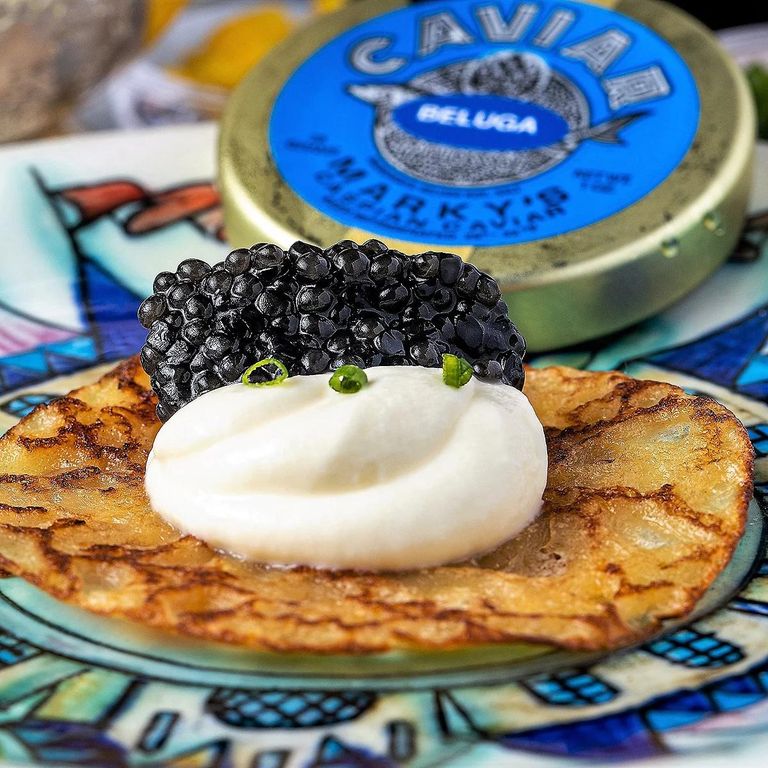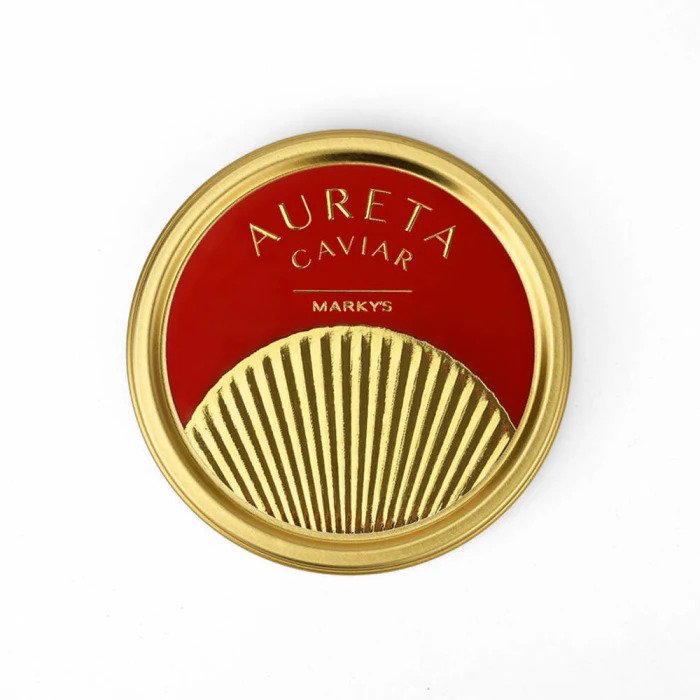For Fancy Fish at Home, Frozen Is the Way to Go
/cdn.vox-cdn.com/uploads/chorus_image/image/70790112/04.22_Eater_Dot_Com_Frozen_Fish_2.0.jpg)
In 1912, a food-obsessed Brooklynite named Clarence Birdseye moved to Labrador, Canada. There, he noticed the Indigenous Inuits’ fishing practices: letting their catches freeze on the spot in the frigid, 30-below-zero air, preserving the ocean-fresh flavor. After returning to the U.S. in 1917, Birdseye went on to develop the modern flash-freezing process. His obituaries would call him the “father of frozen foods.”
Food production had already been industrialized — consider that Upton Sinclair’s The Jungle, a harrowing account of the meat industry, was published in 1906. But frozen food was by and large awful. “When it thawed it was mushy and less appealing than even canned food,” writes Birdseye’s biographer Mark Kurlansky. Birdseye aimed to make frozen food that was second only to fresh. Today, this sounds like a paradox — food that’s been frozen tends to be associated with convenience rather than fine dining. But perhaps that’s changing.
In November 2021, Kurt Oriol started Campo Grande, a company that specializes in high-end Spanish food products. Raised in Madrid, Oriol noticed a hole in the U.S. market for the Spanish foods of his childhood. His company sources a range of items from artisanal producers in Spain, from Iberico pork to vaca vieja beef, and to bring American consumers some of the classic seafood of Spain, Campo Grande offers a fish box with flash-frozen items like European hake and Mediterranean baby clams. Oriol hopes to sway customers on frozen fish. “People have a lot of prejudices about frozen fish from a bygone era,” Oriol says. “But when you bring a fish back to the dock and it’s butchered and frozen in the moment, it locks in all of the freshness. It pauses time.”
Campo Grande joins a growing number of specialty seafood companies offering curated selections that are sustainably sourced and of exceptional quality. Their seafood products may differ but they all aim to convince consumers of frozen fish’s many benefits: It’s high in protein and omega-3 fatty acids; it’s sustainable; and with a (freezer) shelf life of up to a year, it’s convenient for both everyday cooking and dinner parties — planned or impromptu. Unless you’re buying straight from the docks or reeling them in yourself, frozen fish is usually the freshest option on the market. It can be practical and aspirational; impressive and effortless. If pantry-friendly tinned fish was 2021’s hot girl food, maybe frozen fish is next.
“Fresh” fish tends to be a misnomer anyway. Explains chef Erik Slater, “Many people don’t realize that almost all seafood in the marketplace is frozen or previously frozen — from what’s served at restaurants to what’s sold at the seafood counter.” At Slater’s restaurant, Seward Brewing Company in Seward, Alaska, wild local seafood is a menu staple. He often cooks fish straight from frozen, especially during certain species’ off-seasons, to offer his signature dishes year-round.
Because the so-called fresh stuff is more susceptible to harmful bacteria and unsold stock is usually tossed, resulting in food waste, flash-frozen fish is often a safer and more sustainable alternative. Add the convenience of home delivery, which most of today’s companies include gratis, and opting for frozen seems a no-brainer.
One thing’s for sure: The global seafood market is booming. At an estimated $113.2 billion in 2020, it’s projected to reach $138.7 billion by 2027, and frozen seafood is driving some of that growth. According to experts, old methods like air blast or cryogenic freezing have been impediments to quality, due to slow freezing rates and the formation of ice crystals, which in turn damages muscle tissue and changes a fish’s color and texture. But now, emerging methods like pressure freezing, ultrasound freezing, and electrically assisted freezing stand to vastly improve the industry.
Some companies are already capitalizing on the latest freezing technologies to offer the highest-quality frozen fish. Here, a few to consider.
Frozen fish purveyors to try
Campo Grande
Campo Grande’s Spanish fish box reads like the menu of a Bilbao seafood restaurant: thick filets of bacalao, meaty monkfish, juicy lubina, and more, all from the waters surrounding Spain. Founder Kurt Oriol hopes to show customers that similar to meat — think Japanese Kobe or Scottish Angus beef — a fish’s heritage makes a huge difference. “When you try a Spanish monkfish, it’s different from the monkfish you get in the U.S.,” he says. “The same with the bacalao and the merluza — they’re different subspecies.”
Fish Fixe
Founded in 2017, Fish Fixe, which made a splash on Shark Tank, offers choose-your-own-adventure flexibility. Its customizable boxes come with both raw and premade seafood items, from Norwegian salmon and wild-caught Gulf shrimp to jalapeno crab cakes and Creole-remoulade salmon cakes.
Sizzlefish
Sizzlefish founder Rob Mayo had been supplying fish to fine grocery stores like Whole Foods for three decades when he decided to channel that experience into direct-to-consumer sales. His subscription service delivers a variety of sustainably sourced fish, like American red snapper and wild Chilean sea bass, in reusable, recyclable coolers.
True Fin
True Fin will particularly appeal to fans of New England seafood. The Portland, Maine-based company sells sashimi-quality, fully traceable seafood, like marbled bluefin tuna steaks and flaky pollock filets, from the Gulf of Maine.
Marky’s
Marky’s is a Miami- and New York-based caviar and seafood company that specializes in flash-frozen sturgeon (source of the ultimate underwater delicacy, caviar). Founded by Mark Zaslavsky, a Ukrainian immigrant who moved to Miami in 1980 in pursuit of free enterprise, as he tells it, Marky’s offers a range of whole sturgeon, from extravagant beluga to more affordable sterlet. The fish are raised in Sturgeon Aquafarms (Zaslavsky is also managing partner), a Florida facility that opened in light of the declining wild sturgeon population in the Caspian Sea, to offer a more sustainable alternative.
Wild Alaskan Company
Known for its salmon, Alaska has some of the best-managed fisheries in the world; the state constitution mandates sustainable fishing practices. Explains the Wild Alaskan Company, “we only take what nature can naturally replenish.” Founded by Alaska-born Arron Kallenberg, Wild Alaskan Company is a subscription-style delivery service with sockeye salmon, coho salmon, Pacific cod, Pacific halibut, and Alaska pollock.
Salmon Sisters
Fellow Alaska-based company Salmon Sisters, founded by Aleutian Islands-born sisters Emma Teal Laukitis and Claire Neaton, offers sustainably harvested wild fish like sockeye salmon and Pacific cod. The sisters also give a portion of their daily catches to the Food Bank of Alaska “to support healthy Alaskan communities connected to traditional and local wild food.”
Freezer-to-table cooking
Like frozen fish itself, cooking with frozen fish is subject to misconceptions. Contrary to popular opinion, “there’s no need to wait for frozen fish to thaw,” says Slater. “In fact, cooking from frozen is often easier than cooking from fresh because it’s harder to overcook. This makes cooking from frozen a great way for new or inexperienced home cooks to get comfortable with cooking seafood.” If you do choose to thaw the fish first, he recommends removing the fish from its packaging and transferring it to a resealable plastic bag, then allowing it to thaw in the refrigerator for at least six hours, or placing it in cool water for 30 minutes or so.
Slater says you can poach, air-fry, bake, grill, or pressure-cook frozen fish. It’s a matter of preference. But to prepare a filet, he recommends first rinsing the fish in cold water and patting it dry with a paper towel, then brushing both sides with olive, canola, peanut, or grapeseed oil before cooking in whichever method you choose. (Slater advises against butter, sunflower, or corn oil, which burn at higher heats.)
Despite biases against frozen, the products often speak for themselves. “Even our chef customers who previously would never buy frozen seafood have found that our frozen products are the quality they’re looking for,” says Jen Levin, president and CEO of True Fin. “Awareness is growing that when a perishable product is frozen using high-tech methods when it is at its freshest, the quality can beat fish that was never frozen.”
Melissa Harrington, founder and CEO of Fish Fixe, echoes that sentiment. “Many of the early adopters of Fish Fixe were already fans of frozen seafood and knew the convenience and ‘freshness’ of it. But as we’ve grown and customers have found us in different ways, the product bags, recipes, instructions and dinner results were validation that frozen fish was indeed fresh and simple.”
In some places, people have already fallen for frozen fish. Where I live, in France, frozen food has been popular for some time, due in no small part to the ubiquitous frozen food store Picard. Be it strip steaks, salmon filets, or pigs in a blanket, Picard products are generally regarded as high-quality foodstuffs.
Recently, I invited a friend for dinner at my apartment in Paris and pan-seared a couple of frozen Pacific Ocean albacore tuna steaks, Picard’s finest, finishing them with a drizzle of olive oil and a few pinches of flaky salt. We opened a cold bottle of Loire Valley chenin blanc and sliced into the meaty tuna steaks. It was restaurant-quality good and as fresh as it comes — nothing paradoxical about it.
Caitlin Raux Gunther is a Paris-based freelance journalist with words in Bon Appétit, Saveur, T+L, Food52, and more. She’s worked in restaurants in Bilbao, Paris, and New York, and is currently working on a memoir about her time in Spain.






